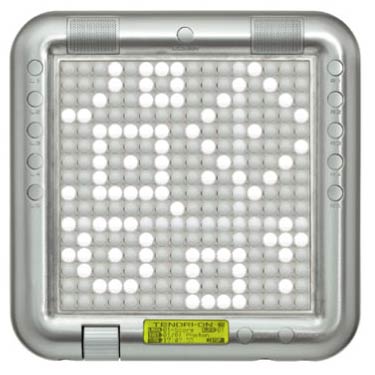Allow me to share with you one of my favorite apps in all of Apple’s App Store: TonePad. You see, I’ve been intrigued by the elusive (and expensive) “visual music composition device” known as Tenori-on since I first heard about it a couple years ago. And since I don’t have the time to make the most of a thousand dollar diversionary investment like the Tenori-on, only an intrigue it has remained.
Which is why I took notice when I first read about TonePad, an app for iPhone/iPod Touch that replicates a part of the Tenori-on concept. And since downloading it, I can’t stop making minimalistic, dreamy tunes with it.
Usage is straightforward and simple. On launching the app, the user is presented with a 16 x 16 grid of dots, where the rows represent the beats and the columns represent 16 tones, with higher pitches at the top of the grid. Press a dot to activate that particular note and each time the measure loops to that beat, a tone is played. For visual feedback, each dot pulses as it is played. Combine dots into chords and melodies, and voila, you’re making music.
The tones themselves are pleasant, with a small reverb applied, making it hard to create a “bad” song. Sure, swiping a finger across the interface may not make for the most compelling of compositions, but it certainly doesn’t create the mess that mashing a keyboard or piano does.
As fun as TonePad is though, it does suffer from some limitations. For one, the composition options are fixed. The tempo, time signature and tone are set to a default, and on a default they must stay. You can’t make the loop any faster or slower, or change the number of beats in the measure or change the basic sound of the tone (or make it another sound entirely). Also, you’re limited to working within just the one loop. It would be pretty nice to be able to set up a loop and have it continue to play as you put together another loop to layer on top (and it would be especially nice to do it with different base tones). Finally, and this one can’t really be helped, but the dots are small enough that they can be troublesome to accurately press. There have been a number of times when I wanted to turn one off and ended up turning the neighbors on.
But hey, I’m not really complaining. TonePad is both fun and free and a worthy app to carry in one’s pocket.
Enjoy some TonePad improvisation from yours truly:
On the Web: tonepadapp.com
